Laws Of Motion
Sponsor Area
300 J of work is done in sliding a 2 kg block up an inclined plane of height 10 m. Taking =10 m/s2, work done against friction is
-
200 J
-
100 J
-
Zero
-
1000 J
B.
100 J
Net work done in sliding a body up to a height h on inclined plane
= Work done against gravitational force + Work done against frictional force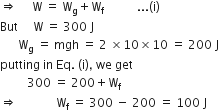
Sponsor Area
A 0.5 kg ball moving with a speed of 12 m/s strikes a hard wall at an angle of 30° with the wall. It is reflected with the same speed and at the same angle. If the ball is in contact with the wall for 0.25 s, the average force acting on the wall is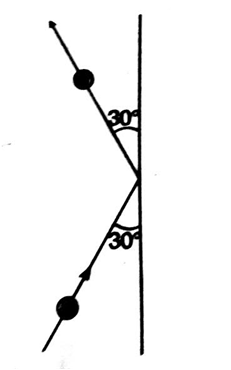
-
48 N
-
24 N
-
12 N
-
96 N
B.
24 N
The vector  represents the momentum of the object before the collision, and the vector
represents the momentum of the object before the collision, and the vector  that after the collision. The vector
that after the collision. The vector  represents the change in momentum of the object
represents the change in momentum of the object  .
. 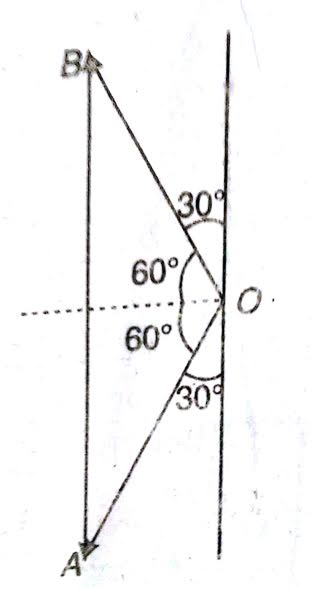
As the magnitudes of  are equal, the components of
are equal, the components of  along the wall are equal and in the same direction, while those perpendicular to the wall are equal and opposite. Thus, the change in momentum is due only to the change in direction of the perpendicular components.
along the wall are equal and in the same direction, while those perpendicular to the wall are equal and opposite. Thus, the change in momentum is due only to the change in direction of the perpendicular components.
Hence, 

Its time rate will appear in the form of average force acting on the wall.


A ball moving with velocity 2 ms-1 collides head on with another stationary ball of double the mass. If the coefficient of restitution is 0.5, then their velocities (in ms-1) after collision will be
-
0,1
-
1,1
-
1,0.5
-
0,2
A.
0,1
If two bodies collide head on with coefficient of restitution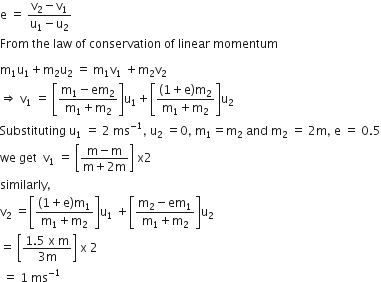
A block A of mass m1 rests on a horizontal table. A light string connected to it passes over a frictionless pulley at the edge of the table and from its other end, another block B of mass m2 is suspended. The coefficient of kinetic friction between the block and the table is  . When the block A is sliding on the table, the tension in the string is
. When the block A is sliding on the table, the tension in the string is
C.

FBD of block A,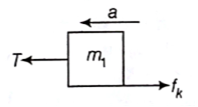
T -m1a = fk ..... (i)
FBD of block B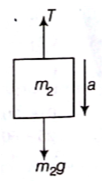
Adding Eqs. (i) and (ii), we get
m2g-m1a = m2a +fk

A block B is pushed momentarily along a horizontal surface with an initial velocity v. if μ is the coefficient of sliding friction between B and the surface, block B will come to rest after a time:
-
v/gμ
-
gμ/v
-
g/v
-
v/g
A.
v/gμ
Block B will come to rest, if force applied to it will vanish due to frictional force acting between block B and surface, ie,
force applied = frictional force
i.e., μmg = ma
μmg = m (v/t)
t =v/μg
Sponsor Area
Mock Test Series
Mock Test Series








